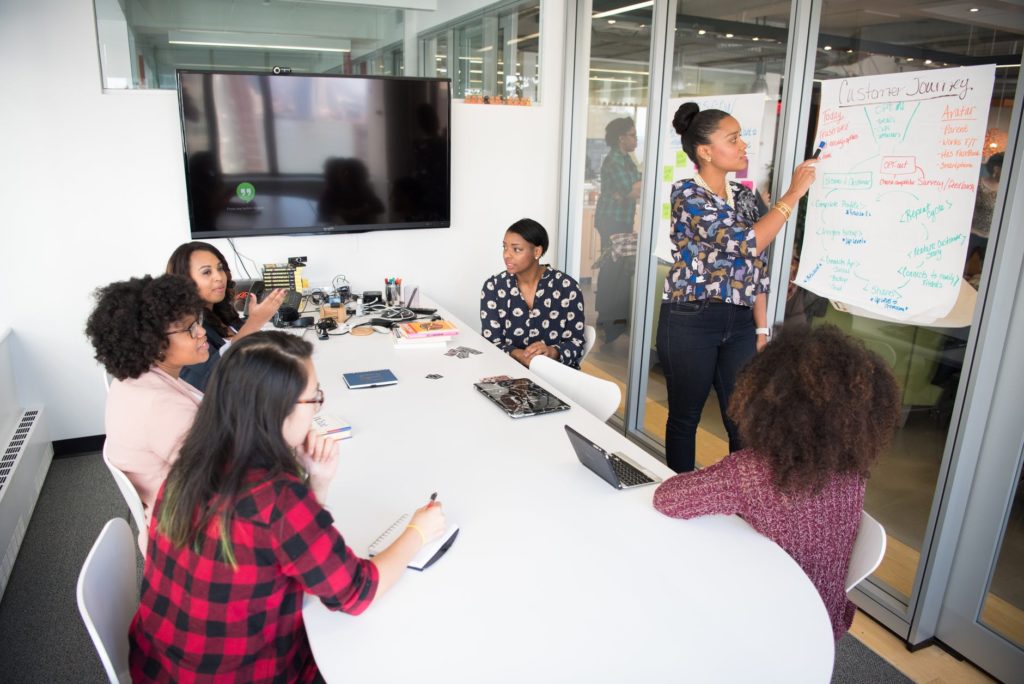How to Find Three Solutions to Any Problem You Encounter

Investors ask startup founders during a pitch: What problem are you trying to solve?
Consumers these days subconsciously or directly want to know: How can you solve a problem I have?
A boss or colleagues come to you with a question: What is the solution to this problem?
It seems our modern lives are characterized by problems! Pain points all around! But consider this: problems keep people busy. If you’re trying to be productive, you hit a curve. If you’re pursuing meaning, you encounter adversity. And amidst all this, your ability to solve problems is called forth and tested.
How about you include in your design the very idea that you’re a problem solver?
Sounds like a good problem, right? Let’s make this notion a bit concrete by looking at some principles and steps to becoming a problem solver.
Define the Problem
Kumail Nanjiani recently appeared on the Ellen Show, and in this clip he talked about how he was angry all day, yelling at people, honking, etc. And then he had a glass of water and realized he was just thirsty. Dehydration was the problem.
It’s a funny bit. But it also introduces the first principle/step neatly. (Thank you, Kumail.)
Define the problem. Spend time on it. Understand the dimensions of the problem. Get to its root cause.
To do this, employ the 5 Whys Technique. Developed by Sakichi Toyoda, whose son created car-maker brand Toyota, this method requires you to ask why 5 times to uncover a problem with multiple root causes. Or simply to arrive at the right question or problem. The fifth iteration is anecdotally observed to be enough in exploring cause-and-effect relationships. But you can go as high as sixth, seventh, eighth, and so on.

Credit: Buffer
Another handy tool is related to the Socratic Method. Wait, you’ve heard this one before. I’m referring to inductive reasoning. This kind of reasoning starts with a conclusion you want to prove to be true.
Here’s how it can be applied. In charge of tourism efforts in your area, you conduct a focus group discussion on how to improve. You find out that a lack of transportation options is preventing people from exploring your sights. So you recommend close coordination with neighboring local areas to set up a point-to-point transport system.
In inductive reasoning, the premises seek to supply proof of the truth of a conclusion. You cannot, however, arrive logically at the certainty of the conclusion. By this approach, you can only obtain the probable cause of the problem. To better understand how it works, watch this Crash Course video on the subject:
Solo-Brainstorm 3 (or More) Solutions
You’ve reached the key step. This is important. A friend shared this with me, and it changed my perspective. If you’re given a problem or found one on your own, identify 3 solutions. I don’t mean, call a meeting and let people throw ideas. I mean, sit down, unleash your creativity, and come up with your ideas. It’s good exercise for your brain.
But there are also two reasons I’m encouraging you to go on an express solo-brainstorming session.
First, people’s creativity is unleashed when they’re asked to generate ideas privately. You read that right. Generating ideas is an individual task. You don’t need the company’s collective mind to birth ideas. Instead, teamwork is required when initial ideas have been gathered and sorted. That is when you need more heads to build on ideas with the highest potential.
Second, and this is for the greater good, it’s more productive to present solutions instead of problems. Absorb that statement. Perhaps recall how someone—a colleague or a friend—approached you with a laundry list of problems. And that person kept ranting the whole time. While it’s also cool to ask if they want to brainstorm solutions with you, you’d probably have liked it better if they consulted you with solutions instead.
It’s like, “Hey, boss/friend/partner/parent, what do you think of these solutions to our/your/my problem?” Wouldn’t that be a good use of everyone’s time? And let’s admit, listening to rants can be draining.

Share Your Hypotheses With Others
So, you have defined the problem and identified possible solutions. It’s time to see if your ideas hold water. This is the part where the teamwork comes in (from the earlier example). But if you’re working on a personal problem, inviting fresh eyes is just as necessary.
If you have a framework that you want everyone to use, share it with them, too. The 80/20 method is useful at this stage. Instead of proving or disproving the validity of each hypothesis, you can determine the most meaningful ones. Which among the proposed solutions will create the greatest impact? This is a good starting ground, especially if you’re working as a unit and potential solutions abound.
Check out the image below for one way to approach this phase:
Credit: IBM
As you can see above, you’re now encouraged to validate your hypotheses. In fact, if you can test your biggest assumptions more quickly, the better.
The example IBM gave relates to creating prototypes. But you can also try to apply that in your personal life. For instance, you can test your assumptions right away, such as in considering a more sustainable lifestyle. Just figure out how to do it without spending too much or wasting resources. Otherwise, it will kind of miss the point.
Analyze the Best Solution
Now, you may have reached the end stage of your problem-solving journey. At least for that one problem you’re working on. (There will be more to come. You know this.)
You might be thinking: What end stage? Didn’t you already apply the best solution in the previous step? Perhaps the proper term for this phase is post-mortem. That has nothing to do with anyone dying. But it has everything to do with the solution you just executed.
You should now evaluate if it was able to solve the problem. Are there aspects of the execution that you didn’t expect? What did you correctly predict? If it didn’t solve the problem, are you back at square one? Or can you move forward by integrating another hypothesis?
That’s a lot of questions! The questions never stop! I feel you. But it’s important to continue the process as long as your problem isn’t solved. But if you got it the first time, good for you. Now it’s time to solve another. What do you say about that, genius?

Bonus: Take Credit For What You Did
There’s a part of us that wants to share the glory with other people. Here’s an example. You’re interviewing for your dream job. The interviewer asks you to tell him or her about a time you solved a problem. Most people are hesitant to share their “most triumphant stories,” says HR expert Liz Ryan. They have to understand the person asking already knows you were working on it with a team.
“Just tell your problem-solving story and be proud of yourself for jumping in to make a positive impact way back when,” adds Ryan.
Two things to glean from this.
First, do not disqualify yourself from the job. You are a problem solver. So own your problem-solving stories. That doesn’t automatically mean you’re hogging the spotlight or discrediting your collaborators. Chances are you have solved a problem before, on your own or with others. How did you approach the situation? Is there something you can do to replicate what you did or revise it for future use?
Those questions lead us to the second point. And that is to keep refining your approach. Different problems require different approaches. Even one problem can be solved by looking at it from different angles. So, grow the confidence in your ability by trying out new things. Don’t rest on your laurels. You’re just as good as the last problem you solved.
-
Quotes1 year ago
30 Inspirational Thoughts For The Day
-
Self Improvement1 year ago
7 Tips To Recreate Your Life In 3 Months And Change Your Destiny
-
Motivation1 year ago
5 Excellent Ways To Stay Focused On Your Dreams
-
Quotes1 year ago
21 Quotes About Chasing Perfection And Striving For It
-
Health1 year ago
4 CBD Products Your Dog Deserves To Have
-
Personal Finance2 months ago
How Do I Find My UCAS ID Number?
-
Entrepreneurs1 year ago
1Password Evaluation – The Highest Ranked Password Manager Out There
-
Entrepreneurs2 years ago
51 Lucrative Ways to Make Money From Home



























